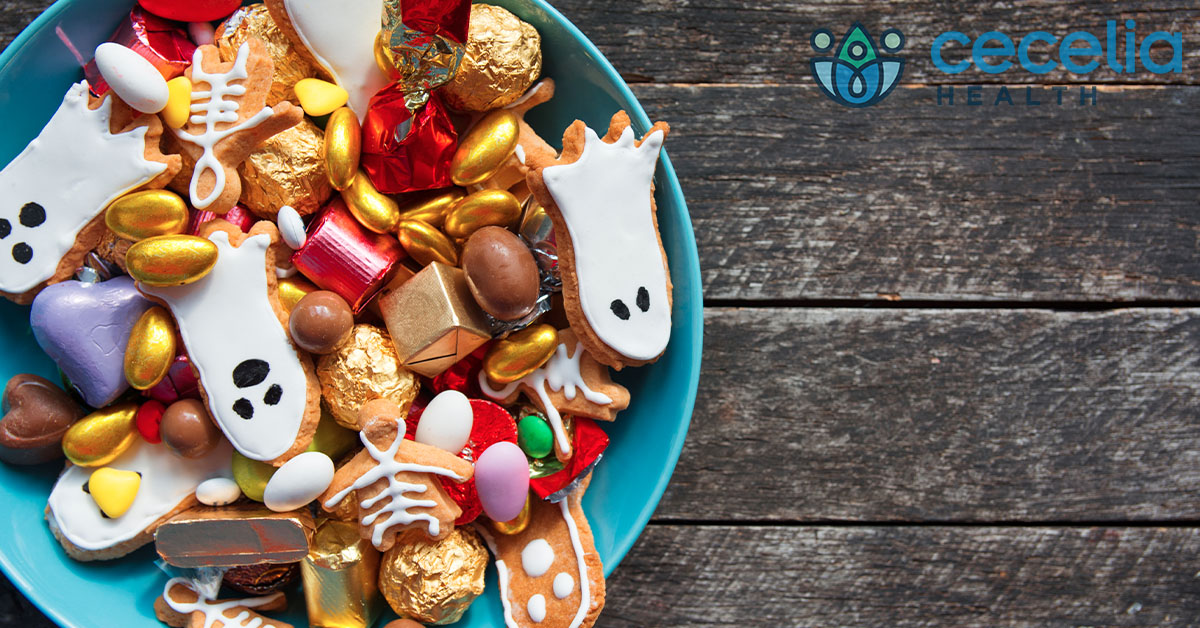It’s October. I look around my neighborhood and I see the beginnings of Fall. I go to the grocery store and there is no doubt — the countdown to Halloween has officially begun. Are you ready?
As an adult living with diabetes, I love Halloween night. It’s the one night of the year I catch up will all the neighborhood children. Sharing the fun with these guys makes it all worthwhile. Yes, I’m sure to sample some of the candy — I am, after all, the official quality control officer. It always pleases me to see my young neighbor who also has diabetes. When she was younger, I made sure my Halloween goodies included non-edible treats just for her. Now that she’s older, she gets candy just like everyone else. Surprised?
Over the years, her parents and I have considered the options as we all recognize that she is a child first, a child with diabetes second. Ten tips to enjoy Halloween while living with diabetes include:
- Let the child with diabetes be a child.Let the child participate. We all make adjustments for persons with special needs. Children have a true need to be children . . . help make this happen.
- Safety first.This is absolutely true for every child trick-or-treating. It’s smart to have treats examined by an adult before the child digs in. If your child is overly eager to sample the treats, begin with a treat at home before hitting the Halloween trail.
- Candy is for eating. . . but no one should eat it all at once. Eating a healthy meal or snack before trick-or-treating can slow down the temptation to eat Halloween treats. After trick-or-treating, candy can be included in the meal plan, shared with others, and/or saved as a quick low glucose treatment (fat free candy is best for this). Additionally, some of the candy can be saved for another day. It all doesn’t need to be consumed in 24 hours to be appreciated.
- Halloween parties frequently include finger foods that, although probably not the healthiest, can also be included in a meal plan. Frequently party foods do tend to be a little carb heavy. Try to guide your child toward the more complex carbohydrates vs the simple (sugary) carbohydrates.
- Halloween can be energy demanding. Halloween can be an exciting and physically active night. A few extra carbs can keep fuel in your trick-or-treater’s tank.
- Treats don’t have to be candy. Pencils, stickers, small toys, and bubbles really are as exciting to children as candy. Those stickers can be put on notebooks and showed off at school the next day.
- Who said Halloween was all about the candy? Corn mazes, hayrides, and parties are all great ways to have fun. Consider outside activities like movie nights, dance nights, bonfires, cook-outs, “boo at the zoo” events, and board game nights. You may also consider a craft party that can really be anything from “recycled art” (made from recyclable materials), “food art” made from fruits and vegetables, tie-dyed t-shirts, painted rocks or pumpkins, face painting, and/or chalk art on the driveway and/or sidewalks. You can even make your own “play clay” for truly creative art. Create your own “haunted” house with games or challenges to progress through the rooms in the house. NOTE: you can add art and crafts as challenges. Yes, trick-or-treating is fun, but so is a haunted corn maze . . . and the zoo at night . . . WILD!
- Watch portions. Most holiday candy is miniaturized. These smaller size servings of candy frequently have a carbohydrate contentsimilar to a slice of bread. My personal favorite, M&M’s with peanuts, the mini-pack, is only 13 grams of carbohydrates. Read the nutrition labels and see how it can fit into a meal.
- Sugar-free candy. . . really? Be mindful of the type of “sugar” candy contains: sugar alcohol vs sugar. Although sugar alcohol typically produces less of a glucose push, they still have carbohydrates and can raise glucose levels. Additionally, consuming too much sugar alcohol has the undesirable effect of causing diarrhea. How much is too much? That tends to vary by person.
- All for one and one for all. Controlling candy portions, etc. is not just a good idea for the child with diabetes. It is a good idea for EVERYONE.
Fun is trending this October . . . even when diagnosed with diabetes. It’s estimated that 25% of the candy sold in the US every year is purchased for Halloween. I have a suspicion it’s not just the kids eating the candy, hmm? With all that candy come challenges for persons with diabetes who are encouraged to limit sugar or carbohydrates. Halloween is October 31st. Do you have a plan?
